A drone can follow you and has revolutionized the dynamic world of aerial photography and videography. Models like the Hoverair X1, DJI Mavic Air 2, and Skydio 2 are not just flying cameras; they are sophisticated devices equipped with advanced technology that allows them to intelligently track and film you in a variety of settings. Whether you are racing down a mountain bike trail, paddling through choppy waters, or simply strolling through scenic landscapes, a drone can follow you and ensures that every significant moment is captured with exceptional clarity and detail.
In this blog post, we will delve into a comprehensive comparison of some of the top follow-me drones on the market, examining everything from their design and build quality to their tracking accuracy and overall value for money. Our aim is to provide you with all the necessary information to make an informed choice about which drone can follow you best fits your adventurous lifestyle and filming needs.
Join us as we explore the capabilities, features, and performance of these remarkable drones, helping you to select the ideal companion for your next adventure.
Table of Contents
Design and Build Quality
When evaluating drones that can follow you, such as the Hoverair X1 among others, it’s imperative to consider their design and build quality. These factors are not just about aesthetics; they directly influence the drone’s durability, functionality, and overall performance in tracking activities. Here is a focused look at these crucial aspects from a practical, drone operator’s perspective.
Material Durability and Chassis Integrity
A drone’s resilience against physical impacts and environmental conditions largely depends on the materials from which it is made. Drones like the Hoverair X1, DJI Mavic Air 2, and Parrot Anafi are often constructed from reinforced polymers and carbon fibre components. These materials ensure that the drone remains lightweight yet robust enough to handle occasional bumps and knocks.
The integrity of the chassis design also plays a pivotal role. A well-constructed chassis will help protect sensitive components such as cameras and sensors from dust and water ingress, which is particularly vital when following you through less predictable landscapes.
Aerodynamics and Portability
The shape of the drone can significantly affect its aerodynamic efficiency, which in turn influences battery life and speed. Sleeker, more streamlined designs are preferable for high-speed follow scenarios, such as tracking fast-moving sports activities. For instance, the streamlined shape of the Skydio 2 allows it to navigate at higher speeds more efficiently, making it ideal for cycling or downhill skiing.
Many users also value portability, which is enhanced by features such as foldability. The Hoverair X1 and DJI Mavic Air 2 both offer foldable designs that make them easy to transport and quick to deploy. This is especially useful for adventurers who need to pack their drone into a backpack at a moment’s notice.
Build Precision and Quality Control
High manufacturing standards and quality control are crucial for ensuring that the drone operates reliably over time. Brands like DJI and Parrot are known for their rigorous testing procedures, which help minimize the incidence of mechanical failures. Features such as magnetic locks for folding arms or snap-fit battery compartments enhance the overall build quality and user experience.

Conclusion
The design and build quality of a drone that can follow you are fundamental to its performance. Whether you’re using it for personal adventure sports or professional filmmaking, you need a drone that not only keeps up with you but also withstands the rigours of the environment. Opt for models that combine advanced materials with innovative design features to get the most out of your aerial companion. Ensure that your choice reflects a balance between lightweight agility and structural durability to enjoy a seamless and worry-free operation.
Battery Life and Power Management
For any drone that can follow you, one of the most critical considerations is how long it can stay airborne — essentially, its battery life. As a seasoned drone operator, I understand that extended battery life not only allows for longer flight times but also ensures that your drone won’t quit on you when you need it most. Here’s an analysis of what to look for in battery life and power management across various drones, including the Hoverair X1.
Understanding Battery Life
Typically, consumer drones that offer follow-me functions have a battery life ranging from 20 to 30 minutes on a single charge. Higher-end models might push this boundary up to 40 minutes under optimal conditions. For example, the DJI Mavic Air 2 provides up to 34 minutes of flight time, which is exceptional for intense follow-me activities such as mountain biking or kayaking.
On the other hand, the Hoverair X1 offers a competitive 30 minutes of battery life, which is sufficient for most recreational and semi-professional needs. When comparing these models, it’s crucial to consider not only the flight time but also how environmental factors like wind and temperature might affect it.
Power Management Features
Modern drones are equipped with smart power management systems that help conserve battery life. These systems automatically adjust the drone’s power usage based on the flight mode and external conditions. For instance, the Parrot Anafi uses an intelligent battery management system to optimise its power consumption, ensuring maximum efficiency during each flight.
It’s also worth noting that many drones now come with features like automatic return-to-home on low battery. This is a safety feature that prevents your drone from running out of power while it is out of reach, a critical consideration if the drone is following you over water or rugged terrain.
Charging Solutions and Considerations
The charging time is another factor that can greatly impact the usability of a drone. Most consumer drones take about 1 to 2 hours to fully charge. Quick charging capabilities can be a significant advantage here; for example, the Skydio 2 offers a rapid charging feature that can bring the drone up to 80% power in just under an hour.
When planning for extended trips where you might not have access to power outlets, consider investing in multiple batteries and a portable charging station. This setup allows you to rotate batteries and keep your drone ready to fly at all times without delay.
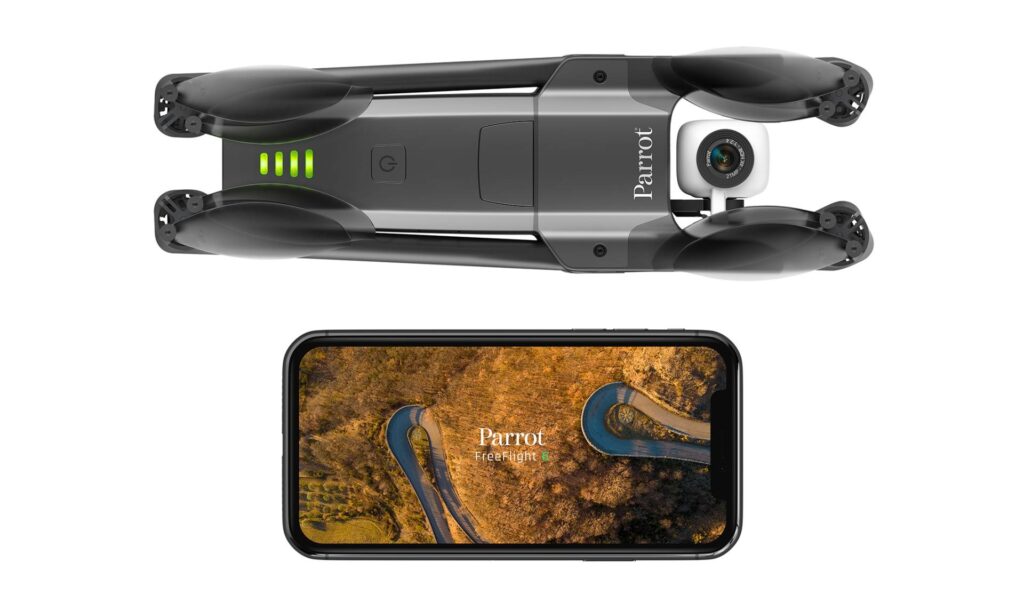
Conclusion
Effective power management and long battery life are essential for any drone intended to follow you reliably. Whether you are filming a day-long event or exploring the great outdoors, choosing a drone with a robust battery and efficient charging options will profoundly impact your experience. By understanding these factors, you can select a drone that won’t let you down when you most need it, allowing you to focus more on your adventure and less on your equipment.
Tracking Technology
For drones that can follow you, such as the Hoverair X1, DJI Mavic Air 2, and Skydio 2, the sophistication of the tracking technology determines how well they can maintain focus on you, regardless of the surroundings. This capability is crucial, especially in dynamic environments where precision and adaptability are key. Here’s an insight into the tracking technology used by these advanced drones, written from the perspective of an experienced drone operator.
GPS Tracking vs. Visual Tracking Systems
Most follow-me drones use either GPS-based systems, visual tracking (using cameras and sensors), or a combination of both to lock onto their subject.
- GPS Tracking: This technology relies on GPS signals to track the subject, typically via a GPS transmitter that you carry with you. It’s quite accurate in open spaces but less reliable in densely covered areas where GPS signals might be obstructed. The Hoverair X1 utilises this system effectively in clear, open landscapes.
- Visual Tracking: Drones like the Skydio 2 use advanced visual recognition technologies, employing AI to process video data to follow the subject. This method can be superior in environments where GPS reliability is low, such as in forests or among urban high-rises.
Real-Time Obstacle Avoidance
A key part of tracking technology is the ability to avoid obstacles while maintaining focus on the subject. Drones equipped with real-time obstacle avoidance systems use a combination of cameras, ultrasonic sensors, and sometimes LIDAR to detect and navigate around obstacles. The DJI Mavic Air 2, for example, features sophisticated front, back, and downward-facing sensors that allow it to dodge obstacles even at high speeds.
Machine Learning and Adaptive Algorithms
The most advanced drones employ machine learning algorithms that enable them to improve their tracking and navigation capabilities over time. These algorithms analyze past performance to make real-time adjustments that enhance tracking accuracy. The Skydio 2 is renowned for its use of AI, which helps it map its environment more effectively and predict the movements of the subject it’s following.

Conclusion
The ability of a drone to follow you seamlessly relies heavily on its tracking technology. Whether through GPS, visual recognition, or a hybrid of both, each system has its strengths and is suited for different environments and purposes. Moreover, the integration of obstacle avoidance and machine learning technologies plays a vital role in enhancing the drone’s responsiveness and reliability. When choosing a follow-me drone, consider the types of environments you plan to use it in and select a drone whose tracking technology best suits your needs. This will ensure you get a drone that not only follows you but does so intelligently and safely.
Camera Quality and Capabilities
A key feature of any drone that can follow you—such as the Hoverair X1, DJI Mavic Air 2, and Skydio 2—is its camera quality and capabilities. As a drone operator, I can attest that these elements are crucial for capturing high-quality footage or photos while the drone autonomously tracks its subject. Here’s an in-depth look at what you should expect from the camera systems of these advanced drones.
Resolution and Frame Rate
The resolution of a drone’s camera dictates the sharpness and detail of the visuals it can capture. For instance, the DJI Mavic Air 2 boasts a 48MP camera capable of shooting 4K video at 60 frames per second (fps). This high resolution and frame rate are ideal for producing crystal-clear video footage, even when the subject is moving quickly.
Conversely, the Skydio 2, while known for its exceptional tracking abilities, offers a 12MP camera that shoots 4K video at 60fps. Though lower in megapixels, its video quality is superb, backed by AI-driven image capture that ensures optimal framing and focus.
Sensor Size and Image Quality
The size of the camera sensor is another critical factor in determining overall image quality, especially in varying lighting conditions. A larger sensor can capture more light, which enhances image quality under low-light conditions. The Hoverair X1 uses a 1/2.3” CMOS sensor, which is quite effective for everyday photography and video recording.
Drones like the DJI Mavic Air 2 and others in its class often feature even larger sensors, which is why they perform better during dusk or dawn flights, capturing clearer images with less noise.
Gimbal Technology
To ensure steady footage despite the drone’s movements and vibrations, a good quality gimbal is indispensable. The Hoverair X1 and DJI Mavic Air 2 come equipped with 3-axis gimbals that stabilize the camera for smooth video capture. This is particularly important when the drone is following you and might be making frequent turns and adjustments.
Additional Camera Features
Modern drones also come with various intelligent features that enhance their filming capabilities:
- Zoom: Features like digital zoom or, in more advanced models, optical zoom allow you to capture details from afar without moving the drone closer.
- Panorama: Automatic panorama modes are excellent for capturing a wider perspective, making them perfect for scenic follow shots.
- HDR: High Dynamic Range (HDR) improves recording in scenes with high contrast, where both very bright and very dark areas are present.

Conclusion
In summary, the camera quality and capabilities of a drone that can follow you are fundamental to its performance in capturing valuable footage or images. From high-resolution sensors and advanced gimbals to innovative shooting modes, each feature plays a pivotal role in enhancing the visual output. Whether you’re an amateur filmmaker, a hobbyist, or a professional photographer, ensuring your drone is equipped with a top-tier camera system will drastically improve your aerial photography and videography experiences. Choose wisely based on your specific needs to get the most out of your drone’s camera.
Flight Performance
Flight performance is a critical factor for any drone, especially those designed to follow you, such as the Hoverair X1, DJI Mavic Air 2, and Skydio 2. As an experienced drone operator, I’ve found that understanding the nuances of how a drone handles in the air can significantly impact your user experience and the quality of footage you can capture. Here’s what to look for when assessing the flight performance of various drones.
Speed and Agility
One of the first aspects to consider is the drone’s speed and agility. This is particularly important for drones that can follow you during fast-paced activities like mountain biking or skiing. For example, the DJI Mavic Air 2 can reach speeds of up to 68.4 kph (about 42.5 mph), which makes it excellent for tracking fast-moving subjects.
In contrast, the Skydio 2 is renowned for its agility in the air, able to navigate complex environments with ease due to its advanced obstacle avoidance system. This makes it ideal for following you through cluttered spaces where quick manoeuvring is essential.
Stability and Wind Resistance
The ability of a drone to remain stable in various weather conditions is another crucial factor. Stability ensures that the footage captured is smooth and usable, rather than shaky and blurred. Drones like the Hoverair X1 are equipped with dual-GPS systems and advanced gyroscopes to maintain balance even in windy conditions.
It’s also worth considering how well the drone can handle wind resistance; a drone that can follow you without being easily tossed about by the wind is invaluable. The DJI Mavic Air 2, for instance, is designed to withstand winds of up to 38 kph (about 23.6 mph), ensuring stable footage even on breezy days.
Endurance and Flight Time
Endurance is about more than just battery life; it’s about how long the drone can perform at peak capabilities before needing a break. The Hoverair X1, with its 30-minute flight time, offers ample opportunity for most standard follow-me sessions. However, for longer shoots or more demanding conditions, you might prefer a drone with longer endurance.
Automated Flight Modes
Many drones equipped with follow-me features also offer various automated flight modes. These modes, such as orbit, waypoint, and cable cam, can enhance the way the drone follows you by offering different angles and perspectives automatically. For instance, the Skydio 2 uses its AI to adapt its flight path in real-time, providing dynamic angles that add production value to any video.

Conclusion
In conclusion, the flight performance of a drone that can follow you involves a combination of speed, agility, stability, and endurance. By choosing a drone that excels in these areas, you ensure that it can keep up with you and your adventures, capturing high-quality footage reliably and effectively. Always consider your specific needs and the typical environments you plan to use the drone in when making your selection. This will help you find a drone that not only follows but enhances your dynamic experiences.
Obstacle Avoidance Systems
As drones that can follow you become more sophisticated, the integration of obstacle avoidance systems has become a critical feature. These systems are essential not only for the safety of the drone but also for ensuring uninterrupted tracking when you’re moving through complex environments. As an experienced drone operator, I can confirm the effectiveness of these systems across various models such as the Hoverair X1, DJI Mavic Air 2, and Skydio 2.
How Obstacle Avoidance Works
Obstacle avoidance technology in drones typically involves a combination of sensors and software that detect and navigate around objects. These can include:
- Ultrasonic sensors: Emit ultrasonic waves and measure the echoes that bounce back to determine the distance to an obstacle.
- Infrared sensors: Use infrared signals to detect the proximity and velocity of nearby objects.
- Cameras: Utilize visual data to identify obstacles and calculate avoidance paths, often supported by AI algorithms for enhanced precision.
For instance, the Skydio 2 uses six 4K navigation cameras to create a 3D map of its surroundings, which allows it to avoid obstacles from all directions with remarkable accuracy.
Evaluating System Effectiveness
The effectiveness of an obstacle avoidance system can be judged by how well a drone can maintain its path without manual intervention. The DJI Mavic Air 2, with its forward, backward, and downward vision sensors, offers reliable performance by detecting obstacles up to 20 meters away, allowing for safer autonomous flight.
Similarly, the Hoverair X1 is equipped with front and rear sensors that help prevent collisions, particularly useful when the drone is following you in densely populated areas or near natural features like trees and cliffs.
Real-World Applications
Obstacle avoidance is not only about preventing crashes; it also enhances the drone’s ability to follow you smoothly. For example, in a mountain biking scenario, drones with superior obstacle avoidance can seamlessly navigate around trees and rocks, ensuring continuous filming without losing track of the subject.

Conclusion
Obstacle avoidance systems in drones that can follow you are a fundamental aspect of modern drone technology, significantly enhancing safety and functionality. Whether you’re navigating urban landscapes or rugged terrain, these systems ensure your drone remains safe and operational, allowing you to focus on your activity. By choosing a drone with a robust obstacle avoidance system, you invest in reliability and peace of mind, knowing that your aerial companion is equipped to handle whatever obstacles come its way.
User Interface and Control Options
The user interface (UI) and control options of drones that can follow you, such as the Hoverair X1, DJI Mavic Air 2, and Skydio 2, play a pivotal role in how effectively you can operate these advanced devices. An intuitive and user-friendly interface can significantly enhance your flying experience, allowing for better control and management of the drone’s capabilities. Here’s an in-depth examination from the standpoint of a seasoned drone operator.
Types of Control Systems
Most modern drones offer a variety of control systems to cater to different user preferences:
- Physical Controllers: Traditional hand-held controllers with joysticks and buttons are still popular for their precision and reliability. For instance, the DJI Mavic Air 2 comes with a sophisticated controller that offers extensive manual adjustments, ideal for users who prefer a tactile response.
- Smartphone Apps: Many drones, including the Hoverair X1, can be controlled using an app on your smartphone. These apps not only direct the drone’s flight but also provide live video feeds and detailed telemetry. The advantage here is the convenience and portability of using a device you already carry.
- Voice Commands and Gesture Control: Advanced models like the Skydio 2 support voice and gesture controls, which can be extremely useful when you need to operate the drone hands-free. This is particularly advantageous during activities where you can’t spare hands to operate a traditional controller or smartphone, such as while climbing or cycling.
User Interface Design
The design of the drone’s user interface on its controller or app is crucial for ensuring ease of use:
- Clear, Concise Layouts: A well-organized UI that displays essential information such as battery life, signal strength, and GPS data clearly is vital. It reduces the cognitive load on the operator, making it easier to focus on the flying experience.
- Responsive Controls: The responsiveness of the UI is another critical aspect. There must be minimal lag between your commands and the drone’s actions, which is something that the DJI models excel at.
- Customization Options: Being able to customize the UI to suit your preferences can make a big difference. For example, some drones allow you to rearrange dashboard elements or set quick access buttons for frequently used functions.

Conclusion
The user interface and control options of a drone that can follow you are integral to a user-friendly experience. Whether you prefer the tactile feedback of a physical controller, the modern convenience of a smartphone app, or the cutting-edge technology of voice and gesture commands, having the right UI and controls can greatly enhance your interaction with the drone. When selecting a drone, consider how the available UI and control options will fit your needs and lifestyle to ensure a smooth and enjoyable flying experience.
Follow-Me Accuracy and Reliability
The essence of any drone that can follow you—like the Hoverair X1, DJI Mavic Air 2, and Skydio 2—lies in its ability to accurately and reliably track your movements. As a seasoned drone operator, I appreciate that the core of a good follow-me drone is how well it adheres to the subject it’s tracking, without manual intervention. This segment explores the accuracy and reliability of follow-me features across several popular drone models.
Assessing Tracking Accuracy
Tracking accuracy in follow-me drones is determined by the sophistication of their sensors and the algorithms that process the sensor data:
- GPS-based Tracking: This is generally more reliable in open areas where the GPS signal is unobstructed. Drones like the Hoverair X1 use GPS to maintain a lock on the subject’s transmitter, which can be highly accurate provided there are no signal interferences.
- Visual Tracking Systems: Drones such as the Skydio 2 use visual recognition algorithms to track the subject. This can offer superior accuracy in environments where GPS reliability is compromised (e.g., densely wooded areas or urban settings with high buildings).
Reliability Considerations
The reliability of a follow-me drone also depends on its ability to adapt to different environments and maintain tracking even when conditions change:
- Obstacle Avoidance: A reliable follow-me drone must be able to navigate around obstacles without losing track of the subject. For instance, the Skydio 2’s use of AI and machine learning enables it to dodge obstacles while keeping the subject in frame, making it one of the most reliable drones for complex environments.
- Environmental Factors: Factors such as lighting conditions, weather, and the presence of other signals can impact the reliability of tracking technologies. The DJI Mavic Air 2, for example, includes features that help it adjust to different light conditions and signal interferences to maintain a steady tracking performance.
Enhancing Tracking Performance
Some drones offer additional settings to enhance tracking accuracy, such as adjustable follow distances, predictive algorithms that anticipate subject movement, and manual override options which allow for quick correction if the drone starts to veer off course.
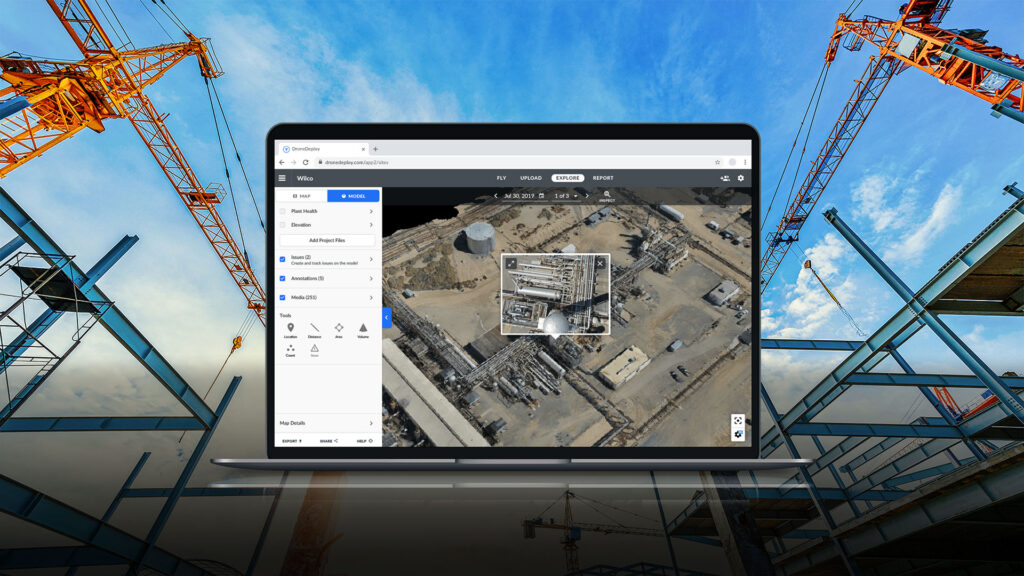
Conclusion
For drones that can follow you, the accuracy and reliability of their tracking abilities are paramount. These features not only determine how well the drone can capture footage but also how much you can rely on it to perform in diverse scenarios. When choosing a follow-me drone, it is crucial to consider how well it can maintain tracking under the conditions you expect to encounter. Opt for a drone with proven reliability in environments similar to your typical usage areas to ensure the best possible performance.
Software and Firmware Updates
In the evolving world of drones, particularly those that can follow you like the Hoverair X1, DJI Mavic Air 2, and Skydio 2, staying updated with the latest software and firmware is crucial. These updates can significantly enhance your drone’s performance, introduce new features, and improve existing functionalities. Here’s a comprehensive look at the importance of software and firmware updates from the perspective of a professional drone operator.
Importance of Regular Updates
Enhancing Performance: Updates often include optimizations that improve the drone’s efficiency, such as battery life enhancements and better flight stability. For instance, after a recent update, the DJI Mavic Air 2 saw an improvement in its obstacle detection which made its follow-me feature more reliable under different scenarios.
Introducing New Features: Sometimes, updates bring entirely new functionalities to your drone. The Skydio 2, known for its autonomous capabilities, frequently receives updates that refine its AI, making it even more adept at navigating complex environments.
Security Improvements: As with any connected technology, security is paramount. Updates ensure that your drone’s software is safeguarded against potential vulnerabilities, keeping your data and device secure.
How Updates are Delivered
Direct Download: Most modern drones are equipped with WiFi capabilities, allowing for updates to be downloaded directly to the device via the internet.
Via Companion Apps: For many drones, firmware and software updates are handled through their respective companion apps. These apps not only facilitate the update process but also provide instructions and support throughout.
Manual Installation: In some cases, updates may need to be downloaded to a computer and installed on the drone via a USB connection. This method is less common but is still used for significant firmware upgrades or in regions with unreliable internet access.
Staying Informed About Updates
To keep your drone operating at its best, it’s important to regularly check for updates. You can do this by:
- Subscribing to Email Notifications: Most drone manufacturers offer a newsletter service that sends updates about the latest firmware and software enhancements.
- Regularly Checking the Official App: Always keep your drone’s companion app up to date and check it for any notifications regarding new updates.
Conclusion
Keeping your drone’s software and firmware up to date is essential for ensuring that your device remains efficient, secure, and capable of performing its best. For drones that can follow you, like the Hoverair X1 and others mentioned here, regular updates can significantly enhance the follow-me functionality and overall user experience. Always make it a habit to check for the latest updates and install them promptly to take full advantage of all the features your drone has to offer.
Customer Support and Warranty
When investing in a high-tech drone that can follow you, such as the Hoverair X1, DJI Mavic Air 2, or Skydio 2, the level of customer support and warranty terms are as crucial as the drone’s technical specifications. Good customer service can greatly enhance your experience, while a comprehensive warranty ensures you’re covered in case of unexpected issues. Here’s what you need to know about navigating customer support and warranty for these drones, explained from the viewpoint of a seasoned drone operator.
Understanding Warranty Coverage
Standard Warranty Periods: Typically, drones come with a one-year standard warranty that covers manufacturing defects and hardware malfunctions under normal operating conditions. For instance, DJI offers a one-year warranty on the Mavic Air 2, which is fairly standard in the industry.
Extended Warranties: Some manufacturers, like DJI, also offer extended warranty plans that can be purchased separately. These plans extend the coverage period and often include additional protection against accidental damage, making them a wise investment for frequent users.
What’s Covered: It’s important to thoroughly understand what is covered by your warranty. Commonly, warranties do not cover damages resulting from crashes or water damage unless specified (as in some extended warranty options).
Navigating Customer Support
Multiple Channels for Support: Good customer support should be accessible and responsive. Leading drone manufacturers typically offer several channels for customer support, including phone, email, and live chat. For example, Skydio excels in providing comprehensive support through its detailed online FAQs and direct customer service channels.
Local Service Centers: Having local service centers can be a huge advantage as it reduces the time and cost associated with sending your drone back for repairs. Check if the manufacturer has service centers in your area which is especially relevant for drone operators in more remote locations.
Community Forums and Online Resources: Many drone brands maintain active online communities where users can ask questions and share tips. These forums can be invaluable for troubleshooting minor issues or learning new tips for using your drone to its fullest potential.
Enhancing Your Experience with Good Support
Proactive Problem Solving: Effective customer support should help you solve problems before they escalate. Whether it’s a firmware glitch or a mechanical issue, quick and helpful customer support can mean the difference between a minor hiccup and a grounded drone.
Building Confidence: Knowing that robust support is just a phone call or a click away can give you the confidence to use your drone to its limits, exploring new possibilities and potentially pushing the technology further.
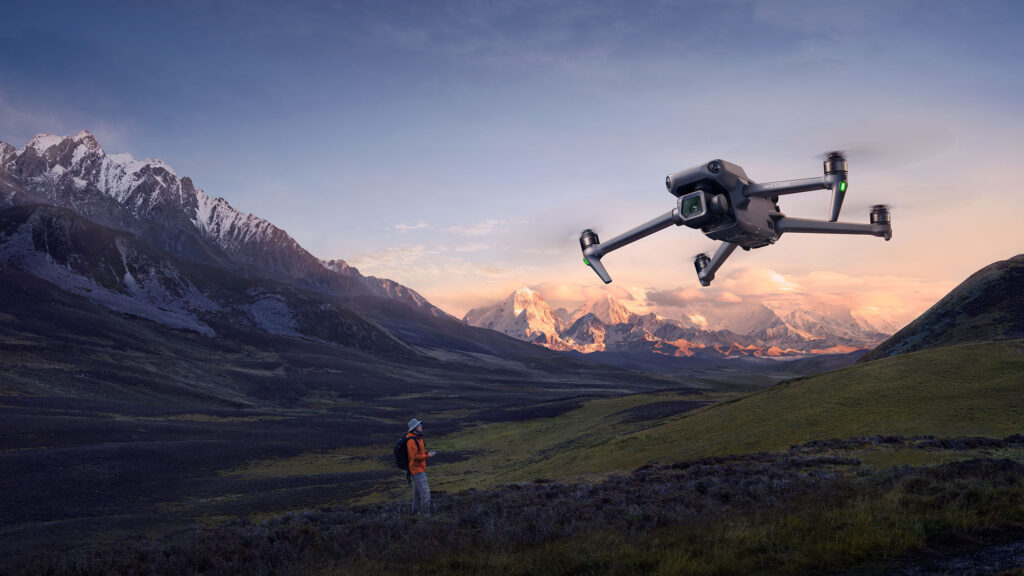
Conclusion
Robust customer support and comprehensive warranty coverage are essential for any drone operator looking to invest in a reliable follow-me drone. They not only ensure that you are protected against possible defects and problems but also enhance your overall user experience by providing necessary assistance when needed. When selecting your drone, consider both the quality of customer support and the details of the warranty to ensure you’re fully covered and supported throughout your drone-operating journey.
Price and Value for Money
In the market for drones that can follow you, such as the Hoverair X1, DJI Mavic Air 2, and Skydio 2, understanding the relationship between price and value for money is crucial for making an informed purchasing decision. As a drone operator, it’s important to assess not just the upfront cost but also what you get for your money in terms of features, performance, and after-sales support. Here’s a detailed breakdown of how to evaluate the price and value for money when choosing a follow-me drone.
Evaluating Drone Prices
Range of Prices: The cost of follow-me drones can vary significantly based on the brand, technology, and features offered. For instance:
- The Hoverair X1 might be priced at a more budget-friendly point, suitable for hobbyists or those just starting with drone videography.
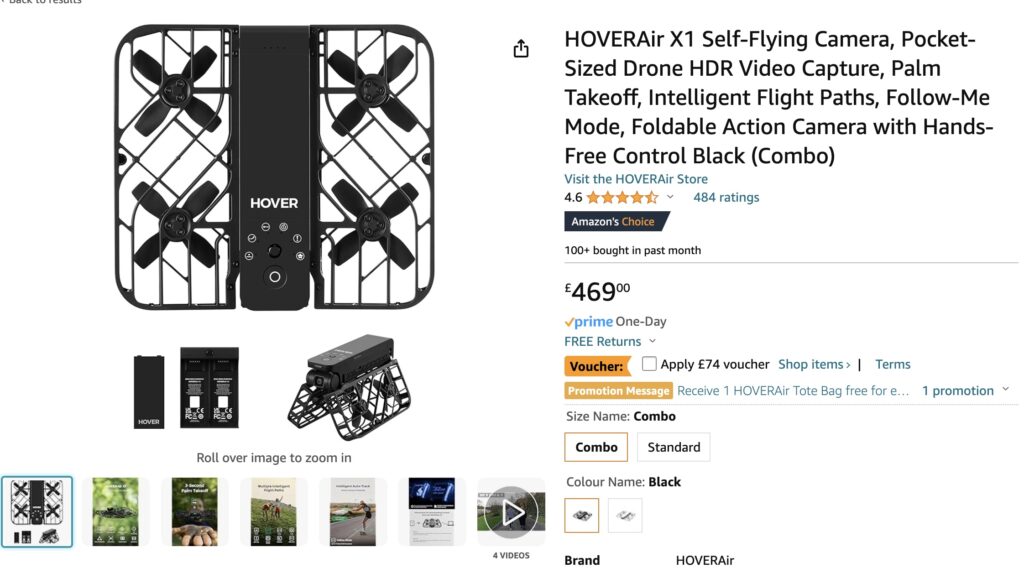
- The DJI Mavic Air 2 often falls into the mid-range price category, offering a good balance of advanced features and cost.

- The Skydio 2, known for its superior autonomous tracking and obstacle avoidance technology, might be at the higher end of the price spectrum.
What Influences Price?
- Technology and Features: More advanced obstacle avoidance systems, higher camera resolutions, and longer battery life can all increase a drone’s price.
- Brand Reputation: Established brands like DJI might charge a premium due to their market position and perceived reliability.
- After-Sales Support: Drones offering extensive customer service and warranty provisions might also come with a higher price tag.
Assessing Value for Money
Comparing Specifications: Look at what each drone offers in terms of specifications and compare them against their prices. Does a higher price mean better camera quality, or more reliable follow-me functionality? Ensure the features justify the extra cost.
Long-Term Investments: Consider the durability and upgradeability of the drone. A slightly more expensive drone that lasts longer or can be easily upgraded might offer better value for money than a cheaper model that needs replacing sooner.
After-Sales Services: Good warranty terms and responsive customer support can add significant value to your purchase, potentially saving you money on maintenance and troubleshooting over the drone’s lifespan.
Maximising Your Budget
Look for Deals and Promotions: Keep an eye out for sales and promotions which can significantly reduce the cost of high-end drones. Consider Bundles: Some manufacturers offer bundles that include extra batteries, accessories, or even additional services like extended warranties at a discounted rate.
Conclusion
Determining the best value for money when purchasing a drone that can follow you involves careful consideration of both the initial cost and the long-term benefits it offers. Evaluate each drone’s features, assess the quality of after-sales service, and consider the total cost of ownership, including potential savings on future upgrades and repairs. By meticulously analyzing these factors, you can choose a drone that not only fits your budget but also meets your expectations in performance and reliability, ensuring you receive the best possible return on your investment.
Consumer Reviews and Testimonials
Consumer reviews and testimonials are invaluable resources when evaluating drones that can follow you, such as the Hoverair X1, DJI Mavic Air 2, and Skydio 2. As a professional drone operator, I often rely on these firsthand accounts to gauge the real-world performance and reliability of drones. These insights can help you make a well-informed decision by highlighting potential pros and cons that might not be evident from specifications alone. Here’s how to effectively use consumer reviews and testimonials in your research.
Importance of Consumer Feedback
Real-World Usage: Reviews and testimonials provide a glimpse into how drones perform under various conditions that might not be replicated in controlled tests. For instance, a consumer might note how the DJI Mavic Air 2 handles in windy conditions, or how the Skydio 2’s obstacle avoidance system fares in densely wooded areas.
Reliability Over Time: Long-term reviews can inform you about the durability and ongoing reliability of a drone. Frequent mentions of after-sale problems or praises about the drone’s resilience can be a deciding factor.
User Experience: Often, reviews delve into the user experience aspects, such as the ease of use of the user interface, the actual battery life in real-world applications, and the effectiveness of customer support.
Analysing Reviews Effectively
Look for Patterns: When reading reviews, look for recurring comments — if many reviewers mention that the Hoverair X1 excels in easy control setups, it’s likely a reliable strength of that model.
Consider the Source: Pay attention to where the reviews are coming from — official forums, well-known tech blogs, or general retail sites. Reviews from experienced drone operators or respected tech influencers can carry more weight than those from casual users.
Read Between the Lines: Some negative reviews might be due to user error or unrealistic expectations. It’s important to interpret these reviews critically, especially when other reviews contradict them.
Maximising the Insights from Testimonials
Video and Photo Reviews: Seeing the drone in action through video or photo reviews can be particularly helpful. They allow you to judge aspects like stability and video quality firsthand.
Detailed User Stories: Look for reviews that tell a story — descriptions of how the drone was used, in what conditions, and how it performed can provide deeper insights than simple rating scores.
Conclusion
Consumer reviews and testimonials are critical tools for assessing drones that can follow you. They offer real-world evidence of how these drones perform outside the showroom, providing transparency on everything from operational quirks to standout features. By carefully analyzing these reviews, you can build a comprehensive picture of each drone’s strengths and weaknesses, helping you choose the best model for your needs based on experienced insights. Always combine this qualitative data with your own requirements and other quantitative specs to make the most informed decision possible.
Accessories and Customisation
For enthusiasts and professionals alike, the ability to accessorize and customize a drone that can follow you, such as the Hoverair X1, DJI Mavic Air 2, and Skydio 2, enhances both functionality and personal expression. As a seasoned drone operator, I understand the importance of tailoring your equipment to fit your specific needs and preferences. Here’s a detailed guide to the types of accessories and customization options available for these popular drones.
Key Accessories for Enhanced Functionality
Extra Batteries: Perhaps the most essential accessory for any drone operator, having multiple batteries can significantly extend your shooting day and help manage downtime, especially in remote locations.
Carrying Cases: A good carrying case not only protects your drone during transportation but also keeps all your accessories organized. Cases designed specifically for models like the DJI Mavic Air 2 often feature custom foam inserts that securely hold the drone, spare batteries, propellers, and other accessories.
Propeller Guards: These are crucial for protecting your drone’s propellers when flying in close proximity to obstacles or during indoor shoots. They are particularly useful for beginners or when operating in tricky locations.
Landing Pads: Using a landing pad provides a clean, flat surface for safe takeoff and landing, which can help prevent damage from rough terrain.
Customisation Options
Skins and Decals: Drones like the Hoverair X1 and Skydio 2 can be personalized with vinyl skins and decals that not only give your drone a unique look but also help protect its surface from scratches and UV damage.
Camera Upgrades: While not always available, some drones allow for camera upgrades or modifications. This can be a valuable feature for professional photographers and videographers looking to achieve a specific aesthetic or require higher performance under certain conditions.
Software Customization: Many advanced drones offer customizable software settings that allow users to tweak flight parameters, camera settings, and even programming specific flight paths. This level of customization can greatly enhance your control and creative potential.
Enhancing User Experience Through Accessories
Filters: Camera filters are a small, yet significant accessory that can alter the footage quality. ND filters, for example, can help control the exposure in bright conditions, enhancing the quality of the video.
Remote Control Upgrades: Upgrading your remote control can improve the ergonomics and functionality, offering better control, additional programmable buttons, or enhanced telemetry data on a larger display.
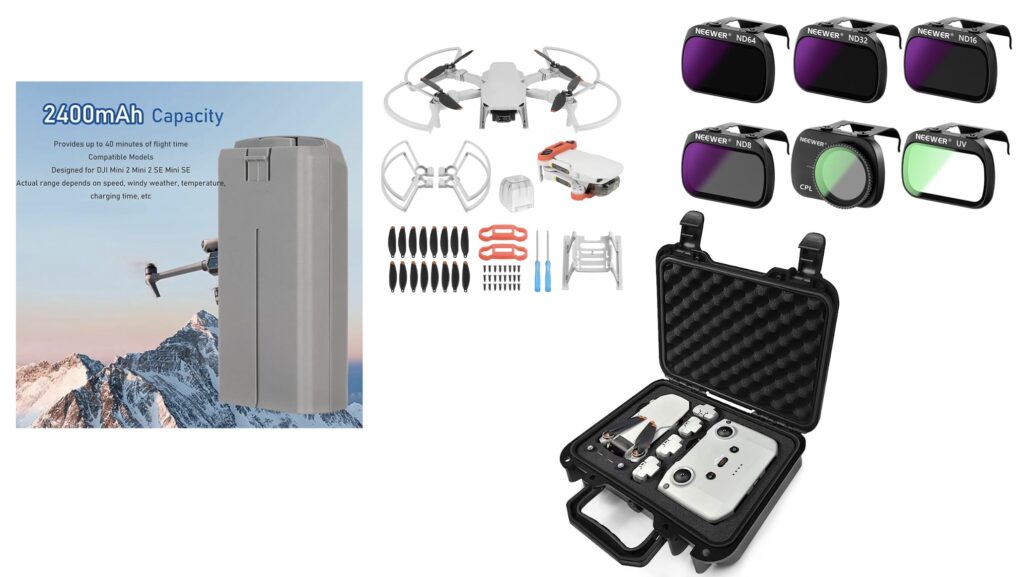
Conclusion
Accessories and customization options for drones that can follow you like the Hoverair X1, DJI Mavic Air 2, and Skydio 2 not only provide practical benefits but also enhance the overall flying experience. Whether you’re looking to extend your flight time with extra batteries, protect your investment with propeller guards and carrying cases, or express your style through skins and decals, there are plentiful choices to fit every need and preference. By carefully selecting the right accessories and exploring customization options, you can maximize both the performance and personality of your drone.
Legal and Safety Considerations
Operating a drone that can follow you, such as the Hoverair X1, DJI Mavic Air 2, or Skydio 2, involves adhering to specific legal and safety guidelines to ensure responsible usage and avoid potential accidents. As an experienced drone operator, I am acutely aware of the importance of understanding these regulations and practicing safety-first flying. This guide will cover the essential legal and safety considerations you need to know.
Understanding Drone Regulations
Flying Permissions and Licensing: In many countries, flying a drone commercially requires a license, while recreational use may have fewer restrictions but still necessitates adherence to certain rules. For instance, in the UK, you must register with the Civil Aviation Authority (CAA) and take an online education package if your drone weighs over 250 grams.
No-Fly Zones: Drones are generally not allowed near airports, in heavily populated areas, or close to government infrastructure. Tools and apps are available to help you identify no-fly zones in your vicinity.
Privacy Laws: When your drone can follow you, it’s important to be mindful of privacy issues. Make sure not to invade anyone’s privacy by flying over private properties or recording video where people expect privacy.
Safety Protocols
Pre-Flight Checks: Always perform pre-flight checks to ensure your drone is in good working condition. Check the battery levels, propeller integrity, and calibration settings before each flight.
Weather Considerations: Avoid flying in adverse weather conditions such as high winds, rain, or fog, which can affect the drone’s performance and increase the risk of accidents.
Emergency Procedures: Familiarize yourself with your drone’s emergency protocols, such as how to execute a safe landing in case of a malfunction or how to use return-to-home features effectively.
Promoting Safe and Legal Drone Use
Training and Education: Consider taking a drone piloting course to improve your flying skills and understanding of legal requirements. This is particularly recommended for those planning to use drones in a professional capacity.
Insurance: Investing in drone insurance can protect you against liability in case of damage or accidents caused by your drone.
Community Engagement: Joining local drone flying clubs or online forums can provide additional support and knowledge-sharing opportunities to enhance your flying experience and safety awareness.
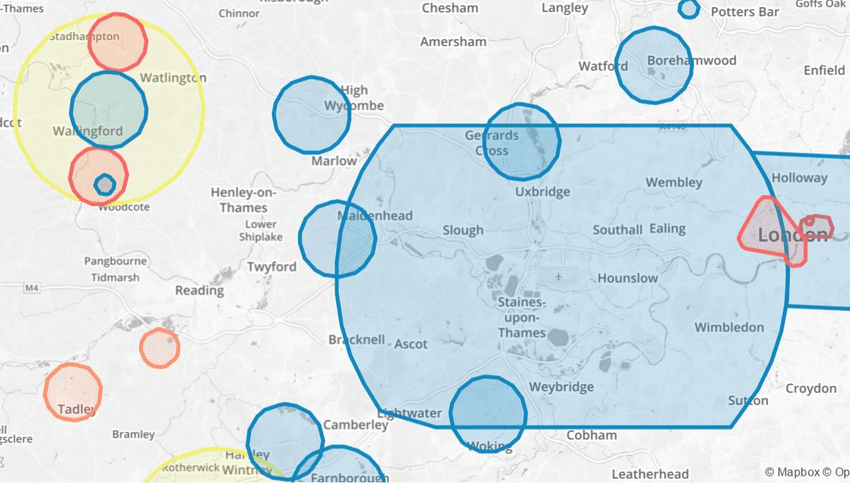
Conclusion
Legal and safety considerations are fundamental when operating drones that can follow you. Adhering to these guidelines not only ensures that you comply with the law but also helps promote safer flying practices among the drone community. By staying informed about the regulations in your area, conducting thorough pre-flight checks, and being conscious of weather and privacy issues, you can enjoy a responsible and fulfilling drone flying experience. Remember, the goal is to use technology responsibly to ensure safety and respect for all.
Conclusion
Choosing the right drone that can follow you, such as the Hoverair X1, DJI Mavic Air 2, or Skydio 2, involves considering a myriad of factors from design and build quality to legal and safety considerations. As a seasoned drone operator, I’ve explored various facets of these sophisticated devices to help you make an informed decision based on your specific needs and circumstances.
Key Takeaways
Performance and Quality: Always prioritize the performance and quality of the drone. This includes evaluating the camera capabilities, battery life, flight performance, and the precision of the follow-me technology. The DJI Mavic Air 2, for instance, offers a robust set of features that might justify a higher price point for serious enthusiasts.
User Experience: The ease of use, including the user interface and control options, can greatly affect your satisfaction with the drone. A model with a user-friendly interface and flexible control options, like the Skydio 2, can enhance your flying experience, especially if you’re a novice.
Support and Maintenance: Consider the level of customer support and the warranty offered. Reliable customer service and good warranty coverage, as seen with the Hoverair X1, can provide peace of mind, particularly for those investing in their first drone.
Legal Compliance: Ensure that the drone you choose complies with local laws and regulations. Understanding these legalities can prevent fines and other legal issues, making your drone flying experience worry-free.
Safety Measures: Prioritize drones that offer robust safety features, including reliable obstacle avoidance systems and stable flight performance under various conditions. This is crucial for preventing accidents and ensuring the longevity of your drone.
Final Thoughts
The decision to purchase a drone that can follow you should be guided by a thorough analysis of your needs and the capabilities of different drones on the market. Whether you are an avid adventurer looking to capture dynamic footage, or a professional filmmaker in need of a reliable aerial platform, there is a drone out there that can meet your demands. By carefully assessing each aspect discussed in this guide, from technical specifications to post-purchase support, you can select a drone that will provide value for money and enhance your filming projects.
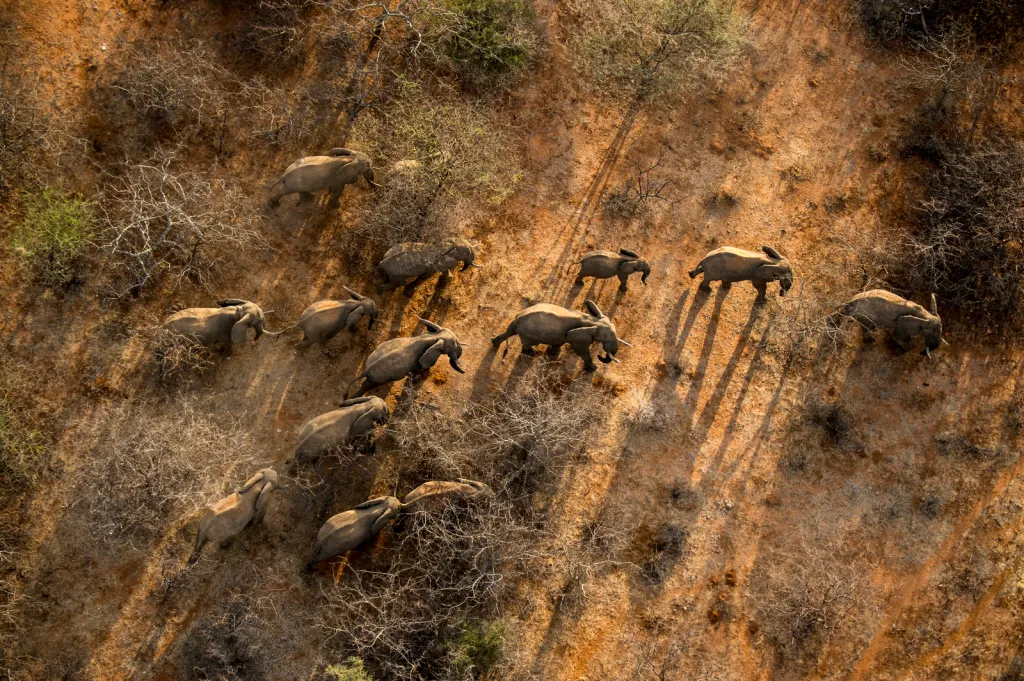
In summary, investing in a high-quality drone that can follow you is about finding the perfect balance between performance, ease of use, and safety. By being informed and cautious, you can make a choice that will bring endless enjoyment and utility to your drone-operating experience.
General Sources of Drone Information:
- Manufacturer Websites and Product Pages
- DJI (dji.com)
- Skydio (skydio.com)
- Hoverair
- Tech Review Sites
- CNET (cnet.com)
- TechRadar (techradar.com)
- Digital Trends (digitaltrends.com)
- Consumer Electronics Shows
- CES (ces.tech) – Las Vegas, USA
- IFA (ifa-berlin.com) – Berlin, Germany
- Aviation and Drone-specific Publications
- Drone Magazine – Provides reviews and updates on new drone technologies and models.
- UAV Coach (uavcoach.com) – Offers drone training and industry news.
- Online Forums and Communities
- Reddit r/drones (reddit.com/r/drones) – A community for drone enthusiasts.
- DJI Forums (forum.dji.com) – Official forum for DJI users.

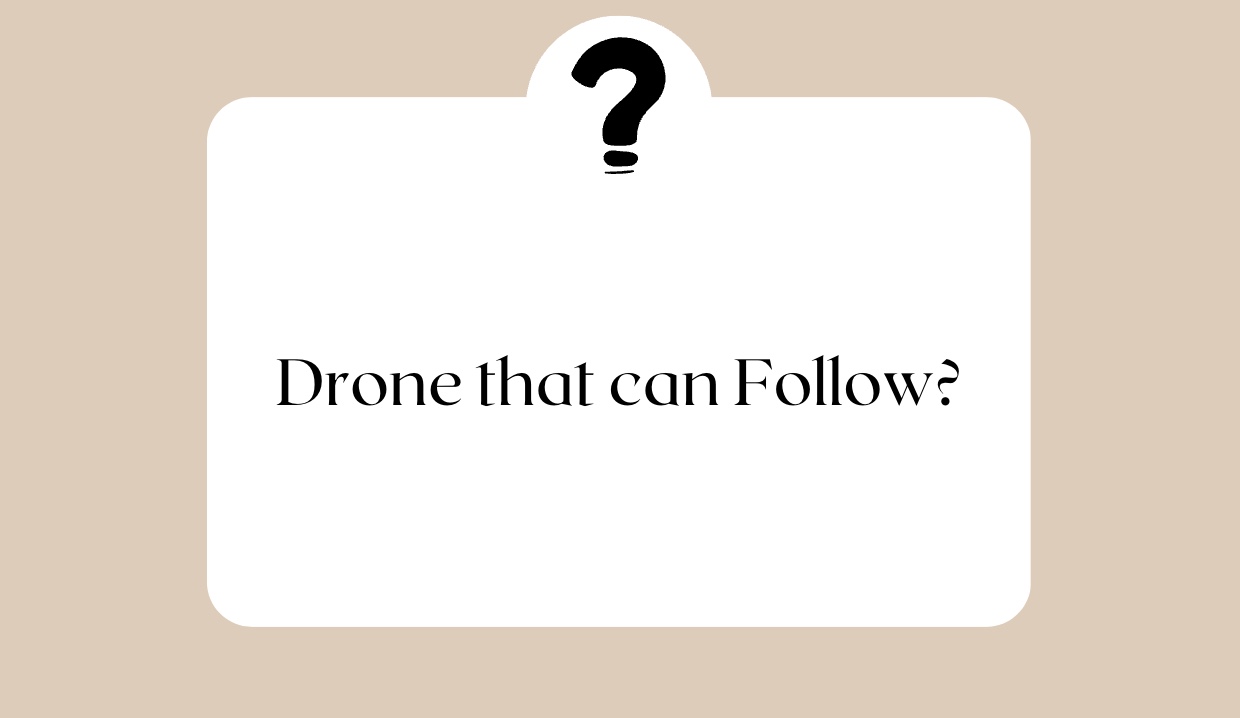
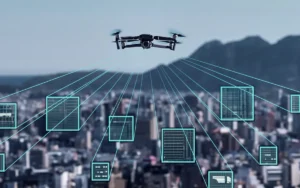
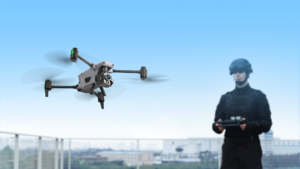
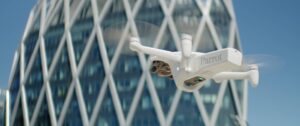
Pingback: Drone Can Carry How Much Weight? Exploring the Carrying Capacities of Popular Drones - Drone Gigs